CPS Unit Number 085-01
Camp: 85
Unit ID: 1
Title: Rhode Island State Hospital
Operating agency: MCC
Opened: 2 1943
Closed: 10 1946
Workers
Total number of workers who worked in this camp: 124
-
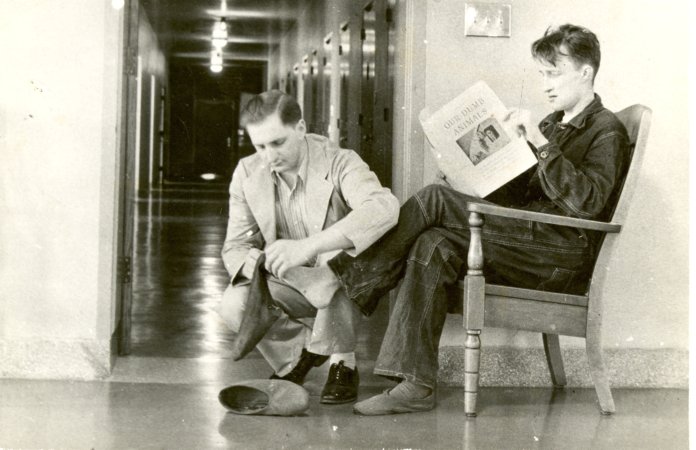 CPS Camp No. 85, Howard, Rhode IslandCivilian Public Service camp 85, Howard, Rhode Island. Caring for patients.Box 2, Folder 11. MCC Photographs, Civilian Public Service, 1941-1947. IX-13-2.2. Mennonite Central Committee Photo Archive
CPS Camp No. 85, Howard, Rhode IslandCivilian Public Service camp 85, Howard, Rhode Island. Caring for patients.Box 2, Folder 11. MCC Photographs, Civilian Public Service, 1941-1947. IX-13-2.2. Mennonite Central Committee Photo Archive -
 CPS Camp No. 85Civilian Public Service camp 85, Howard, Rhode Island. Medical building.Photo 146 Box 2, Folder 11. MCC Photographs, Civilian Public Service, 1941-1947. IX-13-2.2. Mennonite Central Committee Photo Archive
CPS Camp No. 85Civilian Public Service camp 85, Howard, Rhode Island. Medical building.Photo 146 Box 2, Folder 11. MCC Photographs, Civilian Public Service, 1941-1947. IX-13-2.2. Mennonite Central Committee Photo Archive -
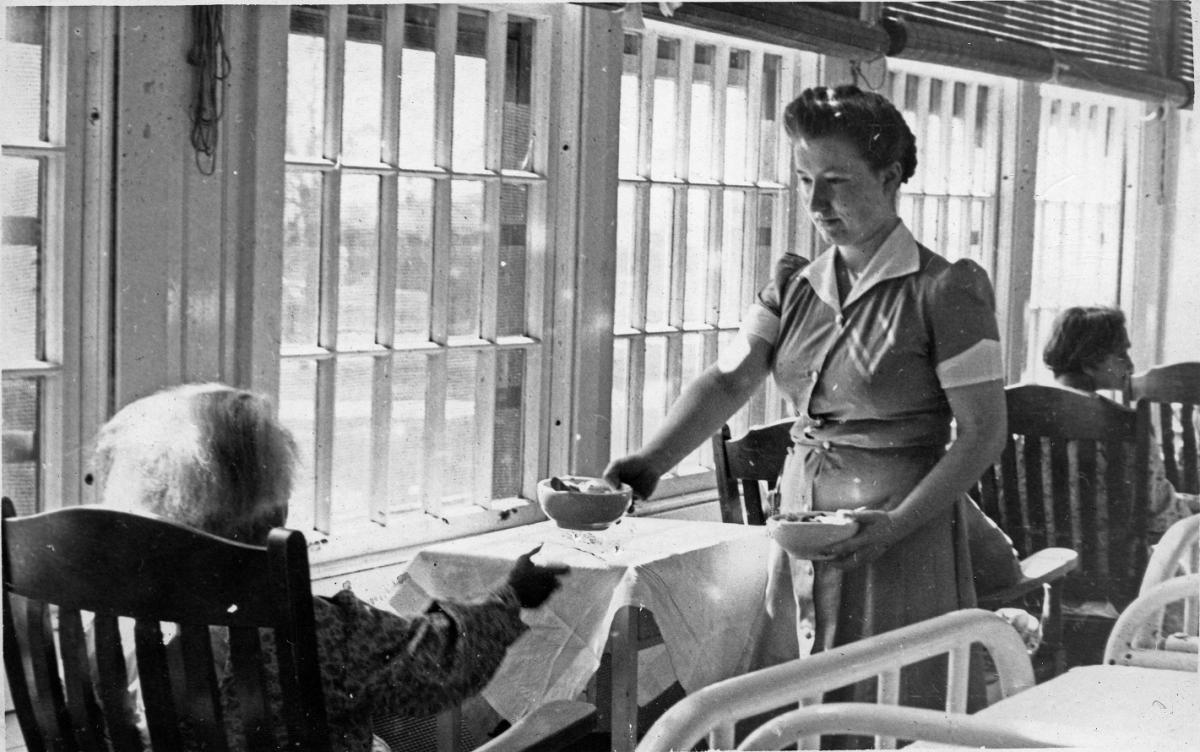 CPS Camp No. 85Civilian Public Service unit #85; on the back is written "Jacobs, female Ward service, 'one of the wives'"; used in Mennonite Life, December 1990, p. 11; used in Perry Bush, Two Kingdoms, Two Loyalties (1998), p. 113.Digital image at Mennonite Church USA Archives, North Newton, Kansasca. 1945
CPS Camp No. 85Civilian Public Service unit #85; on the back is written "Jacobs, female Ward service, 'one of the wives'"; used in Mennonite Life, December 1990, p. 11; used in Perry Bush, Two Kingdoms, Two Loyalties (1998), p. 113.Digital image at Mennonite Church USA Archives, North Newton, Kansasca. 1945 -
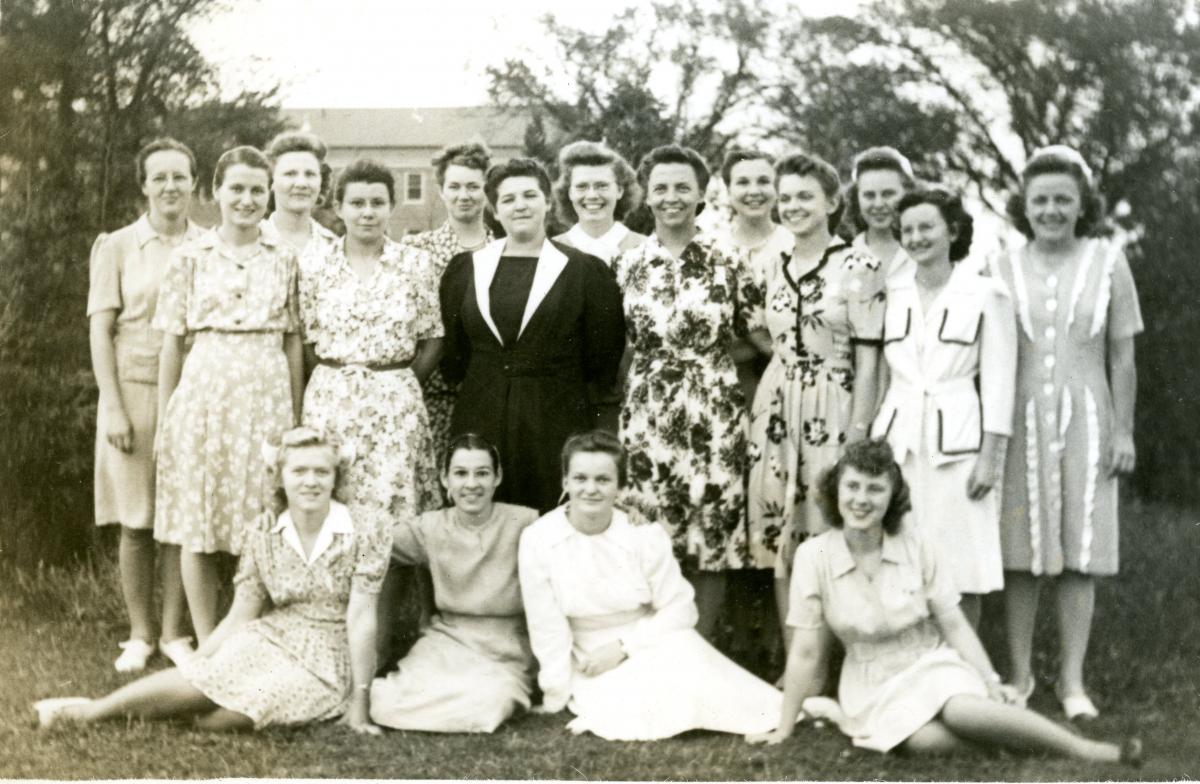 Camp # 85 Women's Summer Service Unit, Howard, Rhode IslandMennonite Central Committee Archival Photo
Camp # 85 Women's Summer Service Unit, Howard, Rhode IslandMennonite Central Committee Archival Photo
-
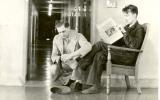
-
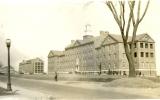
-
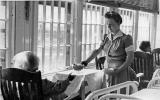 ca. 1945
ca. 1945 -
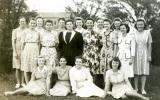
CPS Unit No. 85, a Mental Hospital unit at Rhode Island State Hospital for Mental Diseases in Howard, Rhode Island operated by Mennonite Central Committee, opened in February 1943 and closed in October 1946. Men served as ward attendants.
Rhode Island State Hospital for Mental Diseases was a large hospital. It drew many foreign born patients who spoke little or no English.
Directors: Earl Heisey, Warren Leatherman, Willard Hunsberger, Ernest Goertz
Twenty-five men were selected by Dr. Regan, Assistant Superintendant of the hospital when the unit first opened. They had previously served at Sideling Hill camp. The numbers of men in the unit grew to near sixty.
Ruth Niesley Zercher, wife of an assignee, worked as a mental health aide as did her husband. Other women did the same.
Ruth Miller Willems worked as a nurse at the hospital from February 1943 to the end of November. “While at Howard I worked about half the time as a general duty nurse. Frequently I was assigned to care for the most disturbed patients. I was often frightened but tried not to display my emotions for the sake of the employees and patients. I tried to win their respect by showing love.” Detour . . . Main Highway”: Our CPS Stories p. 103)
The men served as attendants in wards working twelve-hour days.
Upon arrival the COs signed a statement that they would never strike, injure, tease, or swear at patients. However, they soon observed that the state employees beat patients to make them fear the aides. As the CPS men learned better ways to deal with patients, they saw patient-attendant relations and patient behavior improve markedly. Trust developed between the CPS men and patients. State employees began to leave as more COs came to the hospital.
When a new superintendent Dr. Ross was named, conditions in the hospital improved quickly. Ross saw the value of the COs’ work and supported their efforts.
An active camp program brought some forty-two different speakers during 1944 and into February of 1945.
Music organizations within the camp presented ten programs in the community during early 1944. The Ambassador Quartet and the Vesper Quartet sang together in a Male Octet. G. Merrill Swartley wrote the following.
Selective Service had honored our request that the Grottoes quartet be allowed to transfer intact to Howard and we continued with our singing activities, in camp services and each week on a local radio station program. A few of us sang in the choir of the oldest Congregational Church in nearby Providence. I also attended the evening classes at Providence Bible Institute. (“Detour . . . Main Highway”: Our CPS Stories p 57)
A foreign relief training unit opened at Howard in January, 1944, a program that attracted some additional COs to the hospital. The relief training scheduling patterns differed in that trainees worked eight hours a day and devoted an additional four hours to study for relief work. This arrangement created friction with unit staff at the hospital, partly due to poor communication about the differing nature of the relief training work and study. The relief training unit was removed in February 1945 after regular hospital staff complained about the shorter working hours and too much time in recreational activity.
During the summer of 1944, a summer service unit of twenty-seven women led by Edna Ramseyer worked in the wards and attended relief training classes. In 1946, a second summer service unit of fifteen women and three men joined forces with the CPS men in work and study under the leadership of Mrs. Frances Smith of Messiah Bible College. All three of the historic peace churches operated relief training schools at hospitals for CPS men and interested women.
Ruth Niesley Zercher, one of the wives who worked as a ward attendant, learned from her experiences with Jewish residents and a Jewish doctor. She recalled her surprise when the doctor chastised her for calling a patient by her first name, and directed her to address the woman as “Mrs”. As Goossen reports, one of Zercher’s Jewish colleagues explained the insistence on formality and respect as related to the doctor’s outrage not only with Nazi injustices, but also American anti-Semitism. For Zercher, who had little knowledge of the experience of European Jews at that time, “the doctor’s passion had a profound impact.” (p. 13)
The men organized the Committee for Patient Care in 1945. This group contacted agencies and organizations in Rhode Island, the results of which revitalized the Mental Health Society of Rhode Island.
In a 1988 survey, men reflected on their mental health unit experiences. One man recalled the impact of his service on his later career.
As a result of my experience at Howard State Hospital, I decided that in my postwar career, I would rather work with and for people, rather than other choices that were open to me. My work there also led me to become a more gentle person in dealing with others. (in Sareyan p. 251)
In the same survey another CO recalled a visit to the hospital some twenty-five years after he had completed his service.
We were disappointed to find some of the staff bitterly complaining about the deterioration of the hospital as a result of its having become a politicized institution. The welfare of the patients no longer appeared to be a high priority for the institution. They seemed to be longing for a revival of the climate of caring and compassion which we had tried to instill during our tenure there. We left with a feeling that we had sown some seed that had turned out to be not entirely unproductive. (in Sareyan p. 254)
While one of the Howard CPS men recalled the impact of the women who served in CPS units, he offered, “We owe much to our wives who have gladly served by our sides and have taken the same scoffing. . .. Their names shall do down in the annals of CPS”.
Unfortunately, the three historic peace church committees and the National Service Board for Religious Objectors, when preserving records and soliciting materials, comments and criticisms from the CPS men, did not attend as carefully to women’s records. (Goossen p. 119) We note and regret this omission evident in this website.
The men published The Sea Gull, which not only included photos for the unit, but also tells the three-year history of Unit 85. The men created a unit newspaper called Newsletter. By October 1945, unit members had released thirty-nine editions in two volumes.
For more information on this unit and other mental health and training school units, see Melvin Gingerich, Service for Peace: A History of Mennonite Civilian Public Service. Akron, PA: Mennonite Central Committee printed by Herald Press, Scottdale, PA 1949, Chapter XVI, pp. 213-251.
For more information on women COs see Rachel Waltner Goossen, Women Against the Good War: Conscientious Objection and Gender on the American Home Front, 1941-47. Chapel Hill, NC: The University of North Carolina Press, 1997.
For personal stories of CPS men, see Peace Committee and Seniors for Peace Coordinating Committee of the College Mennonite Church of Goshen, Indiana, “Detour . . . Main Highway”: Our CPS Stories. Nappanee, IN: Evangel Press, 1995, 2000.
See also Alex Sareyan, The Turning Point: How Persons of Conscience Brought About Major Change in the Care of America’s Mentally Ill. Scottdale, PA: Herald Press, 1994.
For an in depth history of conscientious objection in the United States, see Mulford Q. Sibley and Philip E. Jacob, Conscription of Conscience: The American State and the Conscientious Objector, 1940-1947. Ithaca, NY: Cornell University Press, 1952.
Swarthmore College Peace Collection, Camp periodicals database
For more in depth treatment of the mental health and training school units see Steven J. Taylor, Acts of Conscience: World War II, Mental Institutions, and Religious Objectors. Syracuse, NY: Syracuse University Press, 2009.